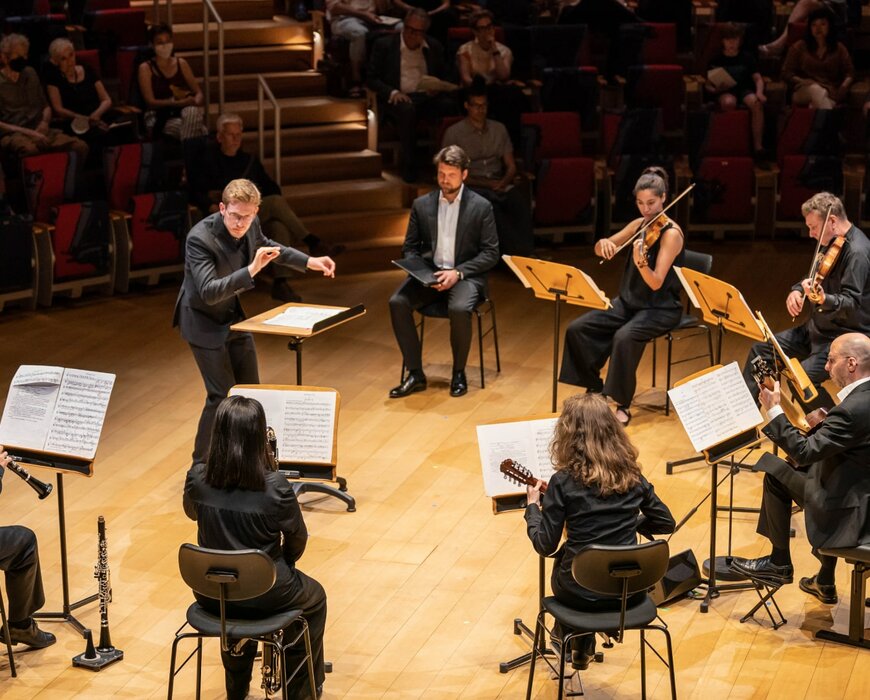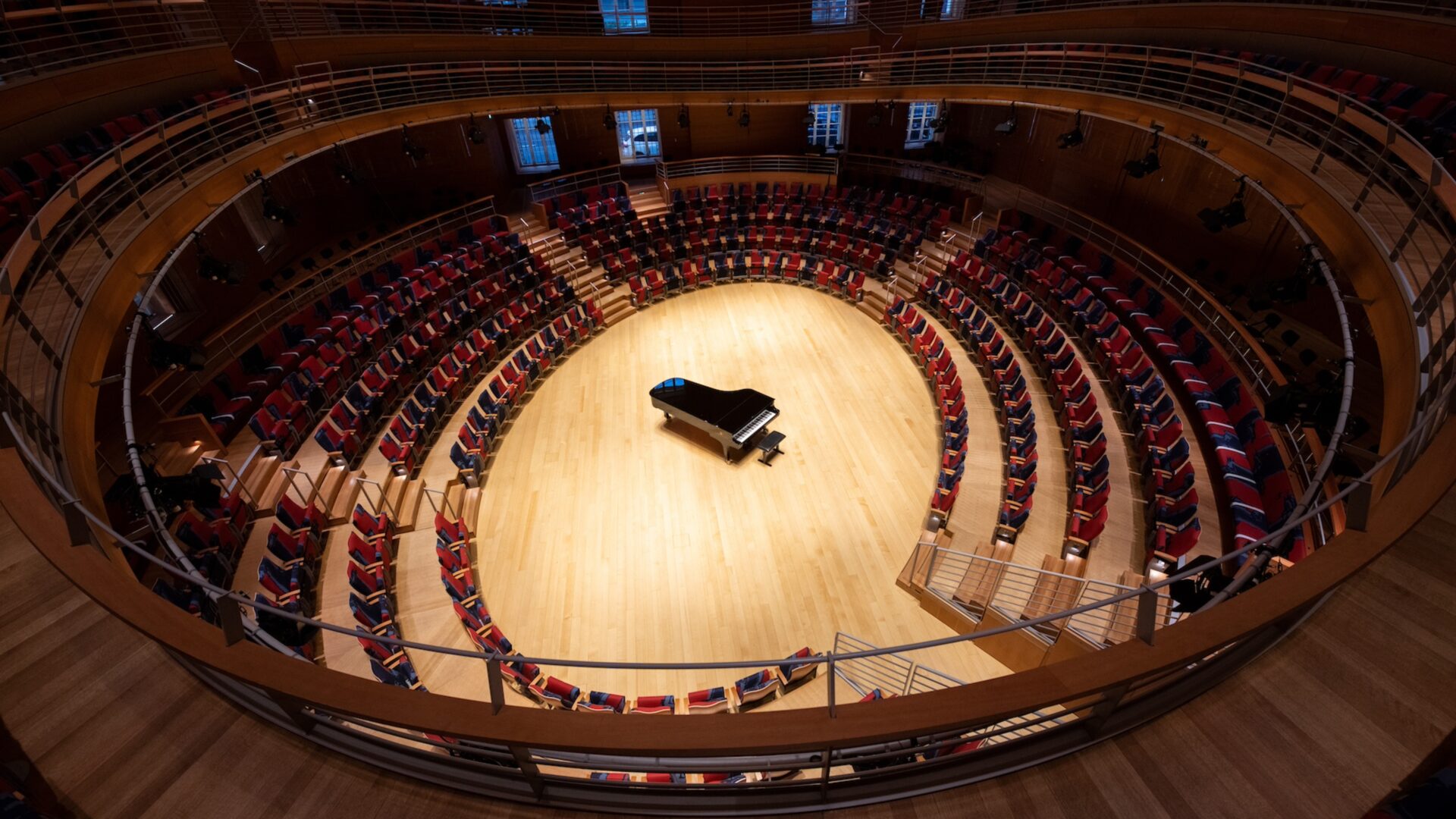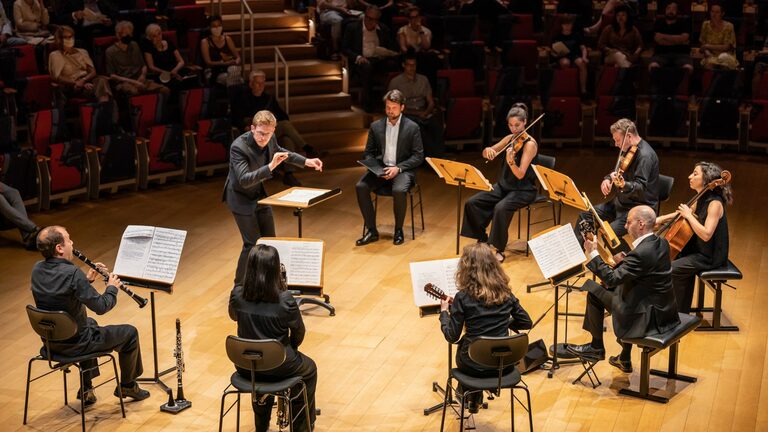Sat, January 13, 2024 at 7:00 PM
BOULEZ ENSEMBLE & THOMAS GUGGEIS
Viennese Schools: Beethoven, Schoenberg, Webern, Berg
Pierre Boulez Saal

Alban Berg wrote his Chamber Concerto in 1924 for the 50th birthday of his mentor Arnold Schoenberg. Unlike the ascetic minimalist Anton Webern, Berg overwhelms his listeners with a rich web of musical ideas, voices, and motives. Leading the Boulez Ensemble, Thomas Guggeis pairs the music of both Schoenberg students and their teacher with works for wind ensemble by Beethoven and Ligeti.
Artists
Program
EVENT TIMELINE
The Emancipation of Dissonance A Conversation with Karim Said
You’ve performed quite a bit of music from the Second Viennese School. What draws you to this repertoire and how do you approach it?
Over the last few years I’ve recorded the complete atonal and twelve-tone solo piano works of the Second Viennese School—my upcoming release in May will conclude this project. Although all of these pieces would easily fit on a single CD, I decided to group them according to a specific theme for each album. On the first, I looked at the early works of Berg, Webern, and Schoenberg within the context of the collapsing Austro-Hungarian Empire in the years leading up to the First World War and paired them with Janáček, Bartók, and Enescu. The differences in style between these two groups of composers who emerged from close geographical proximity to each other I think is worth highlighting. On the second album I’m drawing a link between Schoenberg and William Byrd, as two figures who had a cult-like community of students around them, with Brahms forming a link as one of the first composers to look back at what we now call Early Music. And of course he was also one of Schoenberg’s main influences as a composer. My new album will combine Schoenberg’s Piano Pieces Opp. 19, 23, and 33 and the Webern Variations with Beethoven’s “Eroica” Variations and Mozart’s F-major Sonata K. 332—the link here obviously being Vienna.
I think music from the Second Viennese School should always be placed within a context or theme. These works lend themselves to be performed alongside a wide range of composers and music.
YOUR VISIT

